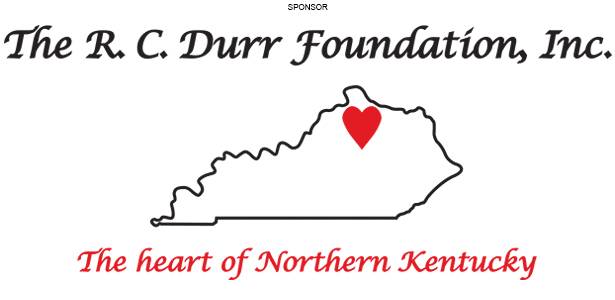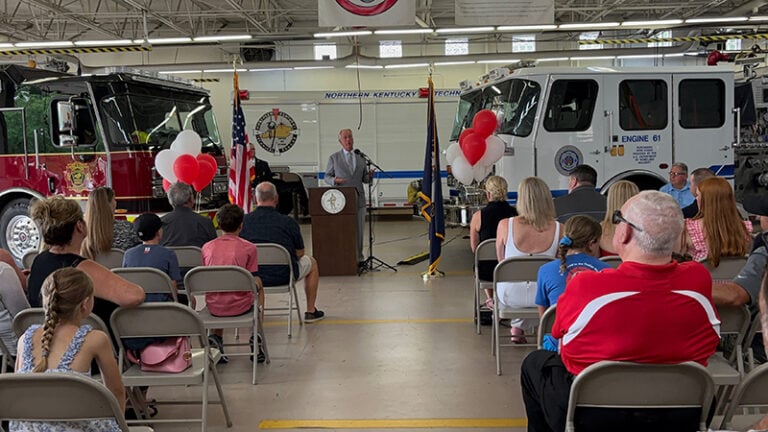Kentucky received some welcome news last month when a national study found that no state had a smaller gap when comparing the high school graduation rates of students from low- and higher-income families.
The average gap across the country stands at 15 percent, but it’s just one percent here in the commonwealth. In fact, our low-income students graduate at a higher rate than the overall national average, something only five other states can say.
This news speaks volumes about the good work our schools and students are doing, especially when considering Kentucky’s relatively high poverty rate. Reports like these also help show us where we are doing well and where we need to improve.
Fortunately, there’s a publication dedicated to this very thing. Each year it publicizes more than 500 state rankings in subjects ranging from education and criminal justice to agriculture and the economy. Connecting these statistical dots paints a more complete picture of who we are.
In most cases, we tend to fall roughly in the middle of the states, beginning with our population. We have a few more people than Oregon and not quite as many as Louisiana, for example. Geographically, we rank lower at 37th. Our 40,000-plus square miles put us, appropriately enough, between Tennessee and Indiana.
We’re also among the bottom half of states in the number of sunny days, which occur here about every other day on average. We are warmer than most states, however, with only 16 having a greater daily average temperature.
We rank a little higher when measuring the percentage of native-born citizens still living here. Almost three out of four of our residents fit in that category, which is far better than Nevada, where less than a third of its citizens are native-born.
We’re a little bit older than most states – our median age is almost 40 – and we also are more likely to drive to work alone.
Speaking of travel, we drove almost 47 billion miles in 2013 and bought 2.12 billion gallons of gas. We’re right in the middle of the states in both of these categories.
The same goes for the number of students attending our elementary and secondary schools, which teach about 677,000 overall. Our student-teacher ratio is also just a hair over the national average.
Academically, our fourth graders made the top 10 in reading last year, while eighth graders were tied at 17th with their counterparts in Iowa, Maine, Missouri, Ohio, Oregon, Virginia and Wyoming.
Math was a tougher subject. Our fourth graders landed in 25th place, but the eighth graders were tied with Georgia at 38th.
We slightly trail the national average in the rate of adults 18 to 24 who are pursuing a postsecondary degree, but we have a lot of work to reach that same threshold when it comes to increasing the number of Kentuckians with a bachelor’s degree. On the plus side, fewer college students graduate with debt here than they do nationally.
Economically, we rank fifth among the states in the percentage of workforce in manufacturing, and these employees work more hours a week than similar employees in any other state. They also earn more, with their weekly pay ranked fourth highest.
We’re fifth in the number of farms, which total more than 76,000. On those farms, you will find 308 million chickens – seventh highest among the states – and 415,000 hogs and pigs, which ranks us 18th.
Kentucky is also in the top 20 for cattle (2.1 million head); soybeans (1.8 million acres); corn (1.3 million acres); and wheat (440,000 acres). Although the rankings don’t include tobacco and horses, it’s worth adding we are among the nation’s leaders in those two areas.
In good news, our overall crime rate trailed the national average in 2014, and we were 44th when just looking at the violent-crime rate. Five southern states, meanwhile, were among the top 10 highest. We also have one of the lowest juvenile arrest rates, which is less than half of the national average, and we have one of the lowest rates of identity-theft complaints.
Because Kentucky plays a prominent role in the nation’s defense, we rank 11th in the number of military personnel stationed here and 14th in the amount of procurement contracts awarded by the U.S. Department of Defense. In 2013, that totaled $5.8 billion.
In the field of healthcare, we have almost 12,000 physicians and a greater rate of nurses per 100,000 people than most other states.
Interestingly, we have the second-highest rate of adult smokers but the third-lowest per capita consumption of alcohol. Here, each person drinks about 2.1 gallons a year, far below the 5.3 gallons they drink in New Hampshire.
There are, as I mentioned, many other statistics, and while they may not fully explain why Kentucky is the best place in which to live, they do give us a lot of information that can help us make that case.
As always, I appreciate those who contact me with any questions or concerns. If you’d like to write, my address is Room 329E, Capitol Annex, 702 Capitol Avenue, Frankfort KY 40601; or you can email me at Mike.Denham@lrc.ky.gov.
If you would like to leave a message for me or for any legislator, call toll-free at 800-372-7181. For those with a hearing impairment, the number is 800-896-0305.
I hope to hear from you soon.
This article was prepared by the Legislative Research Commission and was reprinted with its permission.
State Rep. Mike Denham is a Democrat from Maysville and has represented House District 70 (Bracken, Fleming and Mason counties) since 2001.



















High school graduation rate comparisons are becoming one of the most disappointing examples of the questionable nature of too many education statistics.
There are no standards between states regarding what is required to earn a diploma, so the graduation rate numbers are not really comparable, rendering the entire basis of reports claiming Kentucky success for graduations unsupported by credible data.
Even worse, just within Kentucky the available data raise some serious questions about the validity of comparing graduation rates just across the state’s school districts. For example:
• Kentucky’s education regulations stipulate that Algebra II is a high school graduation requirement. So, how do you reconcile a reported high school graduation rate for 2015 of 88 percent with a proficiency rate on the state’s Algebra II End-of-Course exam that has never exceeded 40 percent over the past four years?
• Kentucky says the goal of our schools is college and career readiness. So, how do we reconcile the fact that only about 66.9 percent of the 2015 high school graduates in Kentucky were able to meet at least one of the various methods that Kentucky uses to establish college and/or career readiness.
The real graduation picture in Kentucky is problematic. As of its Wednesday meeting last week, even the Kentucky Board of Education is now discussing this problem.
Let’s drop the “Happy Talk.” Kentucky’s high school diploma should be a signal of at least minimal, uniform accomplishment. Given the real statistics above, that clearly isn’t the case across the state. And, thinking Kentucky really does outperform other states in this area may be one of the more serious educational “Happy Talk” misconceptions of all.